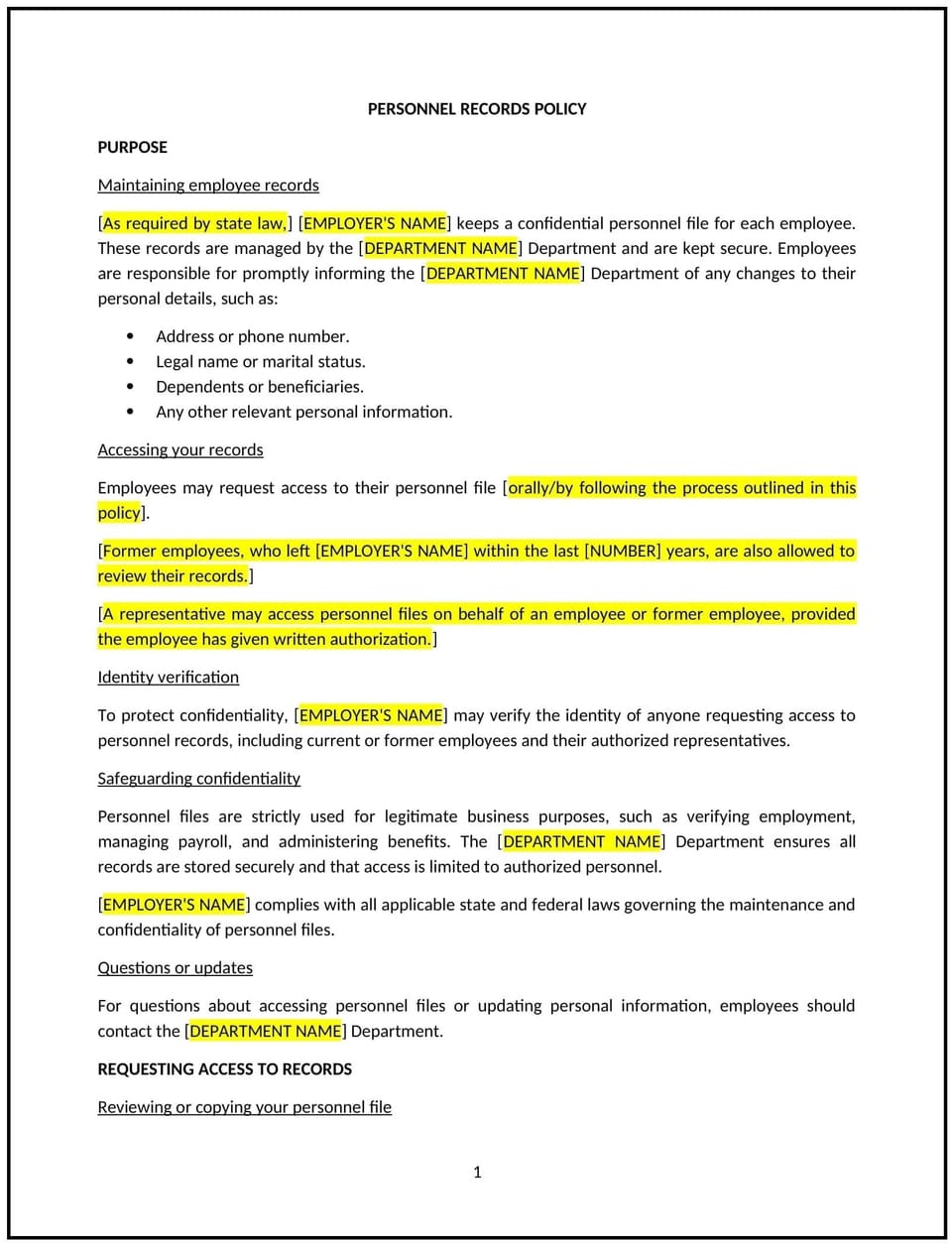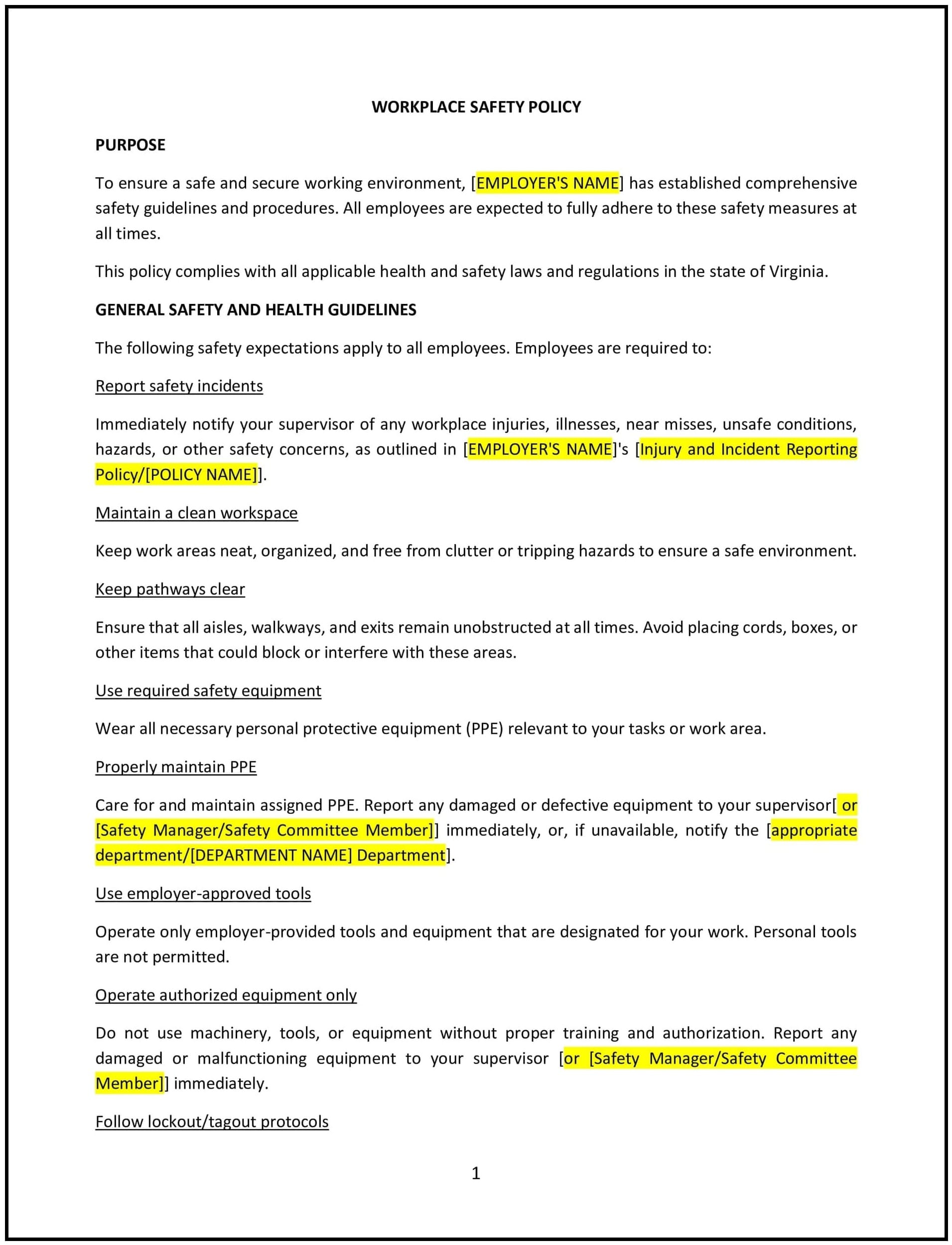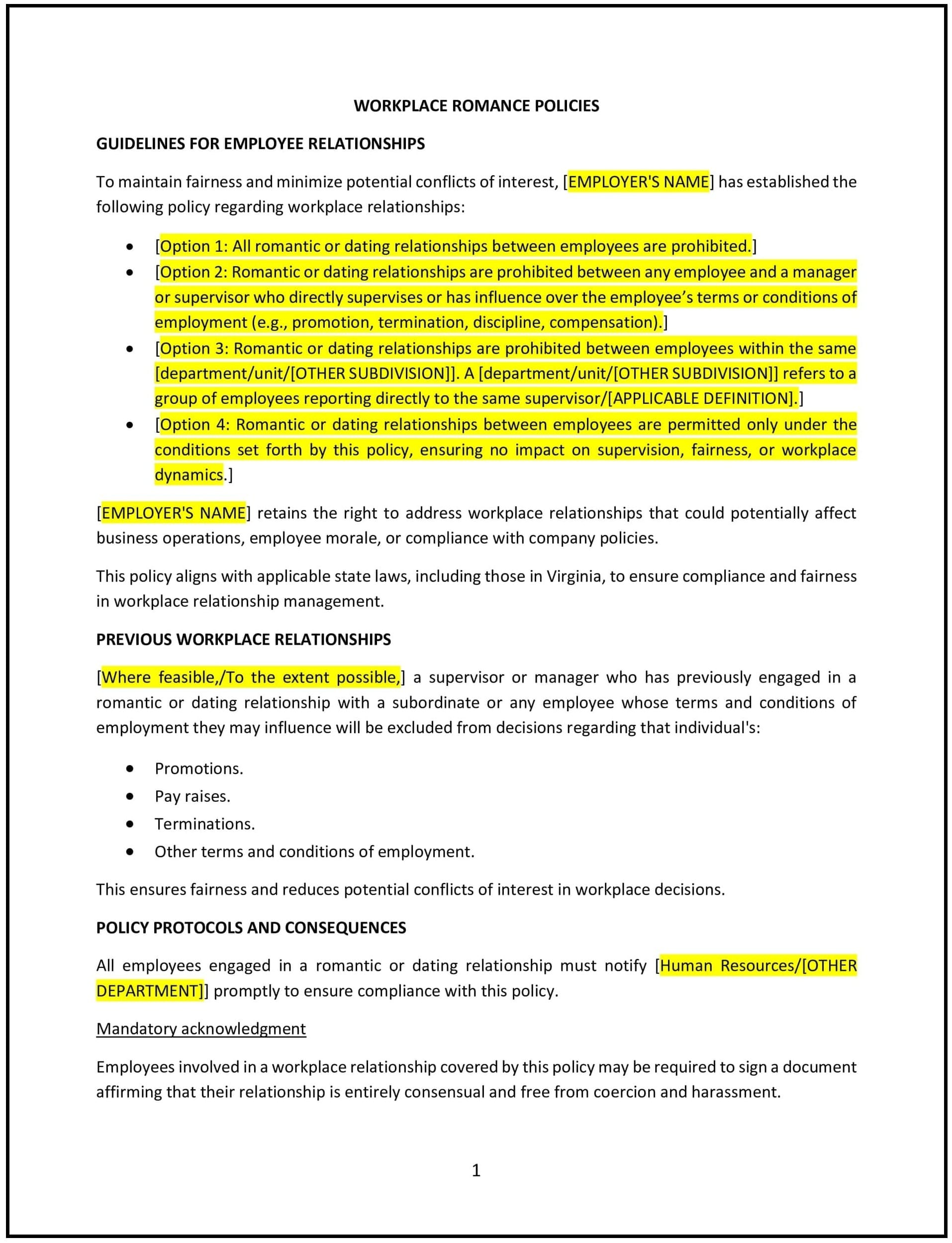Personnel records policy (Montana): Free template

Personnel records policy (Montana)
A personnel records policy helps Montana businesses manage and protect employee records, ensuring that all personal, employment, and performance information is stored securely, accessed appropriately, and handled in alignment with applicable laws. This policy outlines how employee records should be maintained, who has access to them, and how long they should be retained.
By implementing this policy, businesses can safeguard sensitive information, ensure proper record-keeping practices, and protect employee privacy, fostering a trustworthy and transparent workplace environment.
How to use this personnel records policy (Montana)
- Define the types of records maintained: The policy should specify the types of employee records maintained by the business, including personal identification, employment history, performance evaluations, disciplinary actions, benefits enrollment, and other job-related information.
- Set guidelines for record access: The policy should outline who has access to employee records, such as HR personnel, managers, or authorized third parties. It should also specify the process for requesting access to records and any required approvals.
- Establish confidentiality protocols: The policy should include provisions to ensure the confidentiality of personnel records. Access to these records should be restricted to those who need them for legitimate business purposes, and records should be securely stored to prevent unauthorized access.
- Address record retention and disposal: The policy should define how long different types of records will be kept, in accordance with legal or business requirements, and how records should be disposed of once they are no longer needed (e.g., shredding physical records, securely deleting digital records).
- Include guidelines for updating records: The policy should establish a process for keeping personnel records up-to-date, ensuring that any changes to an employee's personal information, job status, or performance are accurately reflected in the records.
- Outline employee rights regarding records: The policy should specify how employees can access their own personnel records, request corrections, or dispute inaccuracies. It should also address any legal rights employees may have regarding their records under Montana or federal law.
- Review and update regularly: The policy should be reviewed periodically to ensure it reflects current best practices, legal requirements, and the business’s needs.
Benefits of using this personnel records policy (Montana)
This policy provides several key benefits for Montana businesses:
- Protects employee privacy: A clear personnel records policy helps ensure that sensitive employee information is handled securely and with respect for privacy.
- Reduces legal risks: By maintaining accurate and well-organized personnel records, businesses can reduce the risk of legal disputes related to employment practices, including wrongful termination or discrimination claims.
- Enhances record-keeping efficiency: A structured process for managing personnel records ensures that information is easy to access, up-to-date, and properly stored, improving efficiency for HR and management.
- Improves transparency: Clear guidelines for record access and management promote transparency and trust between the company and its employees.
- Facilitates compliance: A well-defined policy helps businesses comply with employment laws and regulations, including those related to record retention, data privacy, and employee rights.
- Supports business continuity: Proper record-keeping ensures that essential employee information is available when needed, supporting business continuity and decision-making.
Tips for using this personnel records policy (Montana)
- Communicate the policy clearly: Ensure all employees understand the policy regarding the maintenance, access, and confidentiality of their personnel records. This will help create transparency and build trust.
- Keep records organized: Maintain an organized system for storing personnel records, whether physical or digital, to ensure that information can be easily accessed and is protected from unauthorized access.
- Protect sensitive information: Implement strong security measures, such as password protection for digital records and locked storage for physical records, to ensure that employee data is safeguarded.
- Regularly review records for accuracy: Establish a process for reviewing and updating records regularly to ensure they are accurate and complete, and that outdated or incorrect information is promptly corrected.
- Limit access to personnel records: Only authorized personnel should have access to employee records, and access should be granted based on the need to know. This minimizes the risk of data misuse or breaches.
- Dispose of records securely: When records are no longer needed, dispose of them in a secure manner (e.g., shredding or permanent deletion) to prevent unauthorized access to personal or confidential information.
Q: Why should Montana businesses implement a personnel records policy?
A: Businesses should implement this policy to ensure that employee records are managed securely, kept up-to-date, and protected from unauthorized access, while also promoting compliance with applicable privacy and record-keeping laws.
Q: What types of records should be included in personnel files?
A: Personnel files may include personal identification, employment history, performance evaluations, disciplinary records, pay and benefits information, and any other documentation related to the employee's employment with the company.
Q: Who should have access to personnel records?
A: The policy should specify that access to personnel records is limited to authorized personnel, such as HR staff or management, and that access should be granted only for legitimate business purposes.
Q: How long should personnel records be kept?
A: The policy should outline the retention period for various types of records, which may depend on state and federal laws, as well as the company's specific needs. Typically, records should be retained for several years after an employee’s departure.
Q: Can employees access their own personnel records?
A: Yes, the policy should specify that employees have the right to access their own personnel records. The process for making a request should be outlined, along with any procedures for correcting inaccurate information in their files.
Q: What happens to personnel records when an employee leaves the company?
A: The policy should outline the procedure for managing personnel records after an employee leaves, including whether records will be archived, how long they will be retained, and the secure disposal process for any records that are no longer needed.
Q: How should personnel records be stored?
A: Personnel records should be stored securely, either in locked physical files or encrypted digital systems, to protect sensitive employee information from unauthorized access or breaches.
Q: How can businesses ensure personnel records are accurate?
A: Businesses should regularly review and update employee records, especially after performance reviews, promotions, or changes in personal information. Employees should be encouraged to notify HR of any inaccuracies or updates to their information.
Q: What should businesses do if an employee requests to correct their records?
A: The policy should include a process for employees to request corrections to their records if they believe the information is incorrect. The business should investigate the issue and make necessary updates promptly.
Q: How often should the personnel records policy be reviewed?
A: The policy should be reviewed at least annually or whenever there are changes in relevant laws, company practices, or industry standards to ensure that it remains up-to-date and effective.
This article contains general legal information and does not contain legal advice. Cobrief is not a law firm or a substitute for an attorney or law firm. The law is complex and changes often. For legal advice, please ask a lawyer.


